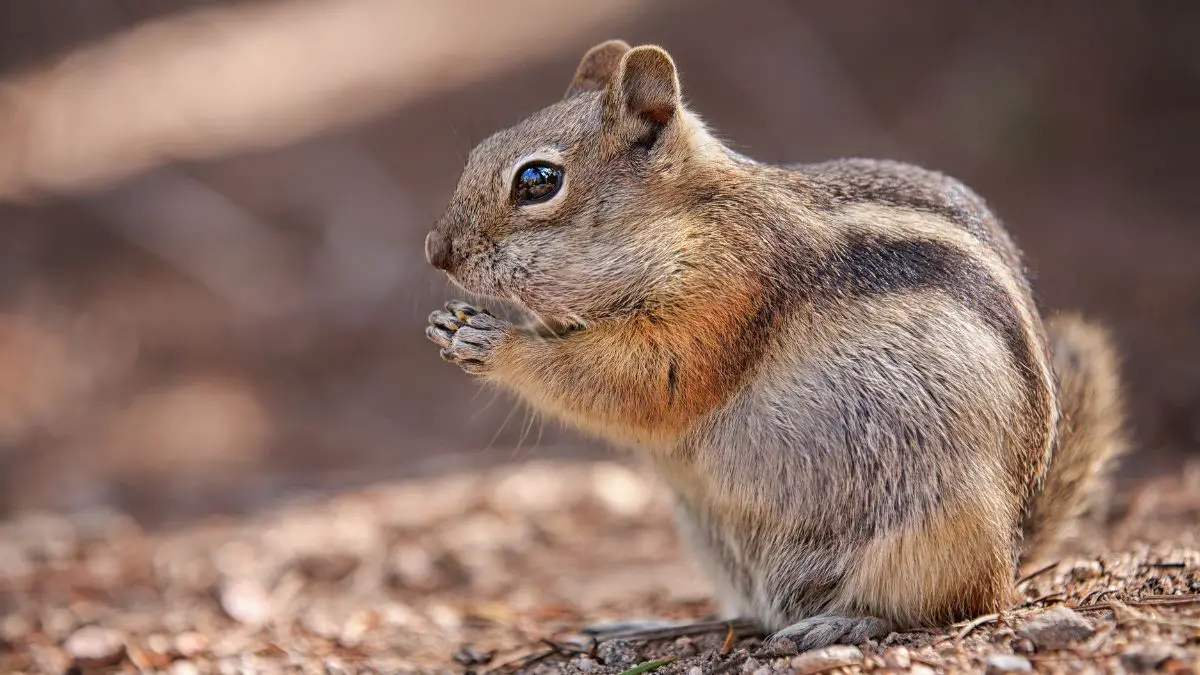If you’ve been trying to figure out how to get rid of chipmunks in your yard, you’re in the right place!
With their adorable stripes, bushy tails, and tiny size, chipmunks might look harmless, but their presence in your yard can be quite a nuisance.
These miniature rodents, native to North America and Asia, are notorious for their voracious appetite, feasting on everything from garden bulbs to beneficial insects.
The intricate network of chipmunk burrows can even undermine the stability of your house’s foundation.
Let’s navigate this comprehensive guide, filled with practical tips on identifying a chipmunk infestation, using natural repellents, setting up traps, and more.
1. Recognize the Signs of a Chipmunk Infestation
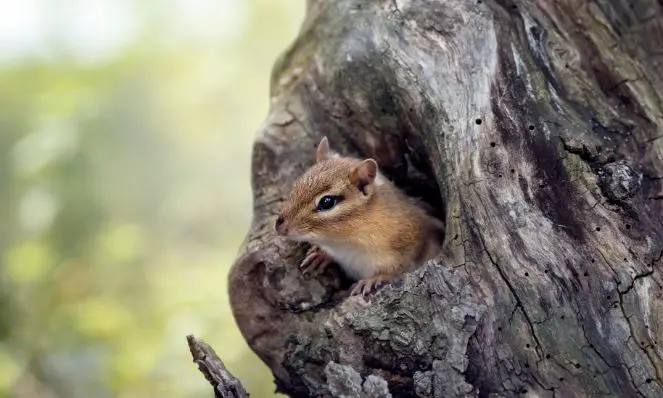
Confirming their presence in your yard before you start planning your battle strategy against these tiny invaders is crucial.
Chipmunks are often elusive, swiftly moving around your garden, making them hard to spot.
However, if your garden plants have been mysteriously damaged, it’s time to put on your detective hat.
Tell-Tale Signs of Chipmunk Infestation
While chipmunks may seem harmless, their burrowing and feeding habits can lead to property damage and other concerns.
Here are the tell-tale signs to watch out for:
- Burrows and Tunnels: Chipmunks are skilled diggers, creating an extensive network of tunnels and burrows where they hide, store food, and raise their young. These burrows, usually about 2 to 3 inches in diameter, are typically located near retaining walls, decks, or garbage piles.
- Damaged Plants and Garden Beds: Chipmunks are notorious for raiding gardens and flower beds. If you notice bite marks on flowers, vegetables, or shrubs, it could signify chipmunks feasting on your greenery.
- Missing Birdseed: If you regularly provide birdseed, sunflower seeds, or other bird food, but it mysteriously disappears overnight, chipmunks might be the culprits. These agile critters are skilled at raiding bird feeders.
- Distinctive Droppings: Chipmunk droppings are small, cylindrical, and often dark in color. These droppings might be near their burrows, feeding areas, or regular paths.
- Unusual Sounds: Chipmunks are quite vocal and can make high-pitched chirping or chattering noises. If you hear these sounds coming from your yard or near your home’s foundation, it could indicate chipmunk activity.
- Undermined Structures: Chipmunks’ burrowing activities can weaken the ground beneath structures such as stairs, patios, and foundations, potentially leading to structural damage over time.
- Nesting Materials: Chipmunks gather materials like leaves, grass, and paper to line their burrows and create nests. If you find small piles of these materials near entrances to tunnels, you might have chipmunks nesting on your property.
- Chewed Wires and Cables: In rare cases, chipmunks may chew on wires and cables, potentially causing damage to outdoor lighting, irrigation systems, or other electrical components.
2. Make Your Yard Less Attractive to Chipmunks
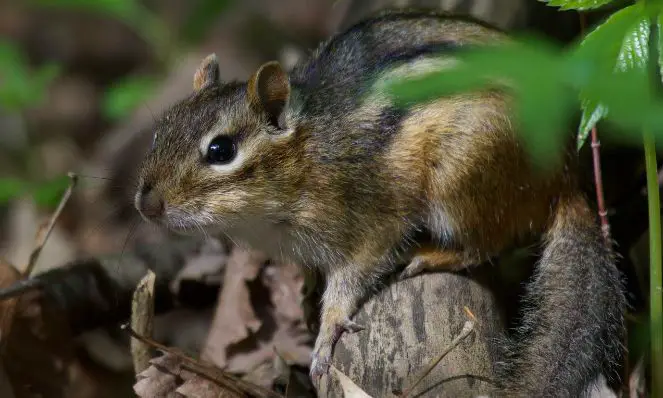
Implementing a few preventive measures can make your yard less inviting to these critters, reducing the chances of a chipmunk infestation.
Here’s how you can roll up the welcome mat for chipmunks:
Maintain a clean garden.
Regularly clean up fallen fruits from trees and berry bushes. Consider planting chipmunk-deterring plants like garlic and daffodils.
Dispose of small rocks, vines, and clippings where chipmunks may hide.
Relocate bird feeders.
Relocate any bird feeders accessible by chipmunks and always clean up the seeds that spill from the feeders.
Alter the landscape.
Modify the landscape of your yard to minimize chipmunk-friendly habitats. Eliminate ground cover, trees, and shrubs that provide continuous cover for chipmunks to travel undetected.
3. Use Natural Chipmunk Repellents

Using natural chipmunk repellents is an effective way to discourage these creatures from venturing into your yard.
Here are a few options:
Essential Oils
Essential oils like peppermint, citrus, cinnamon, and eucalyptus can deter chipmunks from your garden.
Create a solution with water and these oils, and spray it around your plants!
Hair Clippings
Hair clippings can also repel chipmunks. The human smell frightens away these creatures without causing them any harm.
Coffee Grounds
Sprinkle coffee grounds around your plants to keep chipmunks at bay. An added bonus is that coffee grounds can boost plant growth!
Cayenne Pepper
Harnessing the power of nature, cayenne pepper emerges as a potent chipmunk repellent.
The fiery heat of cayenne pepper is overwhelming to chipmunks, deterring them from exploring areas where it’s present.
By strategically sprinkling cayenne pepper around vulnerable spots such as garden beds, entry points, or potential hiding places, you’ve created an invisible barrier that chipmunks are reluctant to cross.
4. Tackle the Bird Feeder Issue

If chipmunks have been feasting on the food you’ve set out for birds, you can take certain steps to stop this.
Relocate the bird feeders.
Relocate bird feeders that are easily accessible by chipmunks. Try to place them high off the ground and away from fences or porch banisters.
Clean up spilled seeds.
Consistently clean up seeds that spill from the bird feeders. This will reduce the food source attracting the chipmunks.
Change your bird food.
You can also change the type of bird food you use to something chipmunks don’t enjoy. They absolutely love sunflower seeds but dislike safflower seed, nyjer seed, and white proso millet.
5. Use Predator Scents
Predator scents can also be an effective method for keeping chipmunks at bay. These animals have natural predators, such as foxes, raccoons, and coyotes.
Scents mimicking these predators can be purchased online and used to deter chipmunks from your yard.
Putting a few drops of predator urine around chipmunk holes and in areas where you often see chipmunks can drive them away to another location.
Be sure to wear gloves and follow directions for usage/handling instructions.
6. Use Chipmunk Baits and Traps
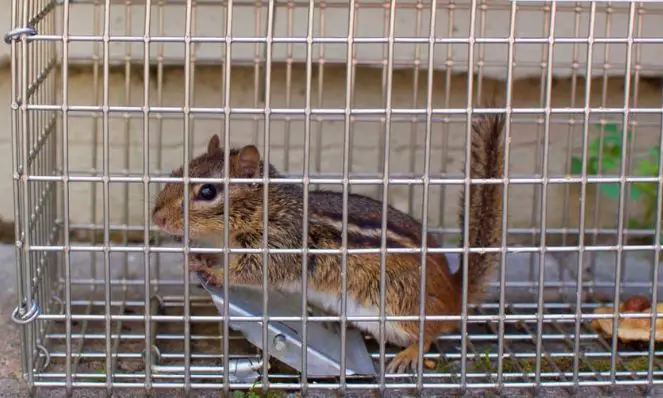
If all else fails, you may have to resort to trapping the chipmunks and relocating them.
Choose the right trap.
Choose a small trap, typically 10 to 20 inches long, with small wire mesh so the chipmunk cannot escape.
One-door traps are often simpler to operate and are frequently used by professionals.
Bait the trap.
Peanuts, sunflower seeds, and apple slices with peanut butter make excellent chipmunk bait. Apply the bait directly to the trap’s trigger plate.
Check the trap often.
Check the trap frequently and relocate the animal as soon as it is trapped. Release it in a suitable habitat at least 5 miles away from your home or as specified by local ordinance.
7. Install Quality Fencing
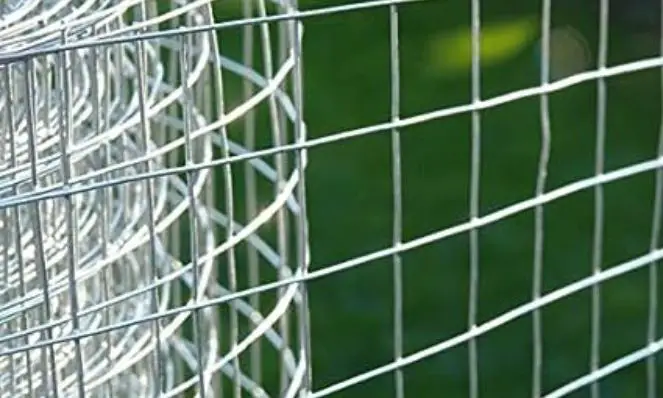
Installing fencing is an effective and proactive approach to prevent chipmunks from entering your yard and causing damage to your plants and property.
Follow these steps to properly install fencing and create a barrier that keeps chipmunks at bay!
Materials You’ll Need:
- Garden fencing (hardware cloth or wire mesh)
- Fence posts
- Fence post digger or shovel
- Wire cutters
- Zip ties or fencing staples
- Work gloves
- Measuring tape
Step 1: Choose the right fencing.
Select a durable and sturdy fencing material that chipmunks cannot easily chew through.
We recommend hardware cloth with a mesh size of 1/4 inch, as it prevents chipmunks from squeezing through.
Step 2: Measure and plan.
Determine the area you want to protect and measure the length needed for your fencing.
Mark the locations where you’ll install fence posts, ensuring they are evenly spaced for proper support.
Step 3: Dig fence post holes
Using a fence post digger or shovel, dig holes for the fence posts along the perimeter of your fencing area.
The holes should be deep enough to provide stable support for the posts.
Step 4: Install the fence posts:
Insert the fence posts into the holes and backfill them with soil, tamping them down to secure the posts. Make sure the posts are level and securely anchored.
Step 5: Attach the fencing.
Unroll the hardware cloth along the outside of the fence posts. Use wire cutters to trim the cloth to the desired height.
Secure the top edge of the hardware cloth to the fence posts using zip ties or fencing staples.
Ensure the bottom edge of the cloth extends slightly into the ground to prevent chipmunks from burrowing underneath.
Step 6: Secure corners and edges.
For corners and edges, fold the hardware cloth and use zip ties or fencing staples to secure it to the posts. This prevents chipmunks from finding gaps to squeeze through.
Step 7: Overlap sections as needed.
If your fencing area requires multiple sections of hardware cloth, overlap them by at least a few inches to ensure there are no gaps.
Step 8: Inspect and test.
Walk around the fenced area to check for any loose spots or gaps. Test the fencing’s stability by gently pushing on it to ensure chipmunks cannot easily dislodge it.
Step 9: Maintain the fence.
Regularly inspect the fencing for signs of wear or damage, and make any necessary repairs promptly.
Trim any vegetation that may be touching or growing against the fence, as chipmunks could use it as a bridge to climb over.
Installing fencing is an effective long-term solution to keep chipmunks out of specific areas in your yard.
Proper installation and maintenance allow you to enjoy a chipmunk-free space while protecting your plants and property.
8. Plant Chipmunk-Deterring Flowers
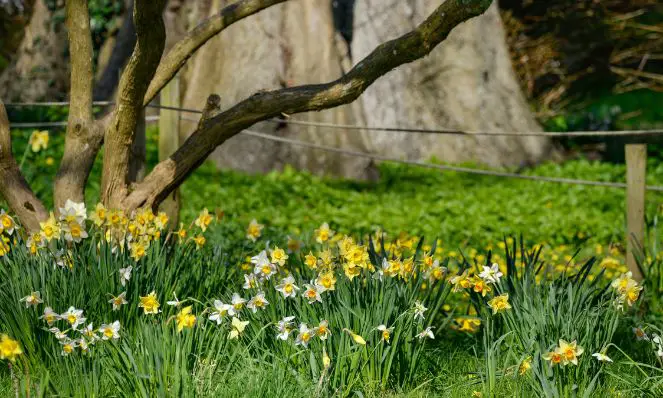
Another effective way to deter chipmunks is by planting certain types of flowers they dislike.
These flowers include:
- Garlic
- Daffodils
- Peppermint
- Citrus trees
- Cinnamon trees
- Eucalyptus trees
9. Keep Your Yard Clean

Maintaining a clean and organized yard is key to deterring chipmunks from making themselves at home.
You can create a less attractive environment for these furry critters by eliminating potential food sources and hiding spots.
Follow these tips to keep your yard clean and chipmunk-resistant!
Clean your yard regularly.
Promptly pick up and discard fallen fruits, nuts, and seeds from trees and plants. These items are a tempting food source for chipmunks.
Keep your yard clear of leaves, twigs, and other debris that can provide hiding places for chipmunks.
Keep an eye on the bird feeders.
Use bird feeders with trays or baffles to prevent excess seed spillage on the ground, which can attract chipmunks.
Clean bird feeders and baths regularly to avoid the buildup of seeds or water to which chipmunks might be drawn.
Secure garbage and compost bins.
Securing your garbage and compost bins is a vital step in the battle against chipmunks invading your outdoor space.
These resourceful critters are experts at finding food scraps, and unsecured bins become a feast for them.
Ensuring that your garbage cans and compost bins have tightly fitting lids creates a formidable barrier against chipmunks trying to access these potential food sources.
Using lids that latch securely is crucial, as chipmunks are skilled at prying open flimsy or loose-fitting covers.
A well-secured garbage and compost system keeps chipmunks at bay and helps prevent other unwanted wildlife from scavenging, reduces litter, and minimizes odors that might attract pests.
Store pet food indoors.
Opting to feed your furry companions indoors, rather than leaving pet food dishes outside, can significantly deter chipmunks from making your yard their new hangout spot.
Chipmunks are opportunistic feeders, and the scent of pet food left outdoors (particularly overnight) can be an irresistible invitation.
By bringing pet feeding indoors, especially during the hours when chipmunks are most active, you minimize the availability of potential food sources and maintain a clean and chipmunk-unfriendly environment.
Trim vegetation.
Regularly tending to your bushes, shrubs, and tree branches by trimming them away from your home’s foundation and other structures accomplishes two key objectives in chipmunk prevention.
First, it eliminates the convenient hiding spots that dense vegetation can provide, making your yard a less attractive haven for these critters.
Second, keeping branches away from structures prevents chipmunks from using them as pathways to access your home, reducing the risk of them finding their way indoors.
This practice not only aids in chipmunk control but also contributes to overall yard health by improving air circulation and sunlight exposure for your plants.
Store firewood properly.
Proper firewood storage is not only essential for maintaining a ready supply of fuel, but it also serves as a strategic measure in your battle against chipmunk intrusion.
Storing firewood correctly can significantly reduce the appeal of your woodpile as a potential chipmunk hideout.
Elevating firewood off the ground, whether through a raised platform or sturdy rack, denies chipmunks easy access to a cozy shelter.
When firewood is stacked directly on the ground, it becomes an inviting nesting site for these critters.
Moreover, placing the firewood stack a prudent distance from your home’s exterior creates an additional buffer zone, minimizing the chances of chipmunks venturing closer to your living spaces.
By following this guideline, you’re not only safeguarding your firewood supply but also employing a preventative tactic that aids in creating an environment where chipmunks are less likely to establish their presence.
Clean up after outdoor activities.
Maintaining a chipmunk-free outdoor space requires meticulous attention to detail, even after enjoyable picnics and gatherings.
Clearing picnic areas of any lingering food remnants and crumbs is a fundamental practice that should not be overlooked.
With their keen sense of smell, chipmunks quickly detect even the tiniest morsels left behind.
Ensuring a thorough cleanup post-picnic is a matter of hygiene and a strategic step in chipmunk prevention.
Removing all traces of food from your outdoor dining spots eliminates the temptation that could lead chipmunks to explore your yard further.
An untouched, food-free environment is far less appealing to these critters, encouraging them to seek nourishment elsewhere.
Seal all entry points.
Regular checks of your building’s foundation, walls, and entry points are crucial to identify any potential gaps or openings that chipmunks could exploit.
These resourceful critters can squeeze through surprisingly small spaces, so thoroughness is key.
Once identified, swift action should be taken to seal any openings found. Utilize durable materials such as steel wool, hardware cloth, or caulk to block these points of entry effectively.
By effectively sealing these vulnerabilities, you create a formidable deterrent, significantly reducing the risk of chipmunks finding their way into your living spaces.
Install stone barriers.
Enhance your chipmunk prevention strategy by placing gravel or stones around plants and structures.
This barrier impedes chipmunks’ digging tendencies, making it challenging for them to burrow and access vulnerable areas.
By encircling your plants and structures with this barrier, you not only thwart chipmunk burrows but also contribute to your landscaping’s visual appeal.
This method is particularly effective around bulbs, garden beds, and the foundation of your home, deterring chipmunks from undermining your landscaping efforts.
Frequently Asked Questions (FAQs)
Do mothballs repel chipmunks?
Mothballs are often suggested as a home remedy to get rid of chipmunks. However, they can harm other animals, like cats and dogs. So, it’s best to avoid them if possible.
What will keep chipmunks away?
Arranging your yard in a way that’s not appealing to chipmunks can keep them away. This includes using landscape materials like stone, gravel, or rock, eliminating low bushes and hiding places for the chipmunk, and creating fewer places to hide.
Do chipmunks carry diseases?
Chipmunks can carry several diseases, including plague, salmonella, rabies, and hantavirus.
Can cats catch or kill chipmunks?
Absolutely! If your cat is a born hunter, it might be time to call them off the bench to handle your chipmunk problem.
How do you spot chipmunk tunnels?
Chipmunk tunnel entrances are usually hidden under or next to wood piles, brush, plantings, large rocks, or structures. They also remove displaced soil from the area and often move entrances to make tunnels hard to find.
Wrapping it Up
There you have it…our complete guide on how to get rid of chipmunks in your yard.
As you work to keep chipmunks out of your yard, remember that using a mix of strategies is key.
From sealing entry points to using natural chipmunk repellents like cayenne pepper, maintaining cleanliness, and planting chipmunk-deterring plants, your efforts will create a balanced, chipmunk-free outdoor space.
Keep in mind that persistence is important, as chipmunks can quickly adapt. Regular checks and consistent prevention will help you enjoy your yard without unwanted furry visitors!

